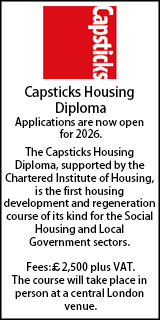No case to answer: prosecution under s. 82 Environmental Protection Act 1990 dismissed
- Details
Sarah Salmon reports on how a social landlord successfully defended a private prosecution brought by an occupier of one of its properties under section 82 of the Environmental Protection Act 1990.
In recent years, local authority and social landlords have seen an increase in private prosecutions brought against them under section 82, Environmental Protection Act 1990 (“EPA 1990”).
At the trial at Stratford magistrates’ court this month, London and Quadrant Housing Trust (L & Q) were found not guilty from the outset; the occupier conceding there was no statutory nuisance as at 8 September 2021. The issue remaining, which is extremely common in these prosecutions, was whether or not L & Q was liable for the occupier’s legal costs properly incurred i.e. was there a statutory nuisance at the date the complaint was laid before the court.
After the close of the prosecution’s evidence, L & Q applied to have the prosecution dismissed on the basis that L & Q had no case to answer.
The district judge dismissed the case on the basis of both an absence of, and tenuous and inconsistent, evidence from the expert as to whether or not a statutory nuisance was present at the time the complaint was put before the court. The judge had concerns about the occupier’s credibility and evidence relating to the person responsible but was primarily dissatisfied with how the expert had assessed the premises being prejudicial to health.
The occupier’s expert had concluded there was a statutory nuisance“…because the Category 1 Hazard of Damp & Mould Growth render the premises prejudicial to the health of the occupants”.
In cross-examination, the expert accepted that in order to conclude there was a category 1 hazard for the purpose of the Housing Health and Safety Rating System (HHSRS) pursuant to Part 1, Housing Act 2004 (and the relevant regulations and guidance), he would have had to carry out the required methodology and calculations. The expert said he had done this but the evidence was not before the court. The expert’s evidence was that his mental process was the same when considering Part 1, Housing Act 2004 and s.82, EPA 1990 although he accepted the statutory provisions differed. The expert’s position was where there is a category 1 hazard, particularly in relation to damp and mould (and some other categories), the premises will also be prejudicial to health.
Although the expert’s position was not accepted, the submission was that even if the expert was right, the court had no evidence to satisfy itself there was a category 1 hazard as the expert had not set out his workings and calculations. It did not, therefore, have the evidence to assess the expert’s conclusions on whether or not the premises were prejudicial to health.
The judge agreed. Although there may have been a presence of damp and mould that was not enough. The evidence had to meet the statutory requirements and reach the standard so as to allow a finding beyond reasonable doubt. She commented that even taking the case at its highest, the prosecution’s case was wanting.
Sarah Salmon is a barrister at Cornerstone Barristers. She appeared for L & Q.
Must read
Fix it fast: How “Awaab’s Law” is forcing action in social housing
Housing management in practice: six challenges shaping the sector
Why AI must power the next wave of Social Housing delivery
Sponsored articles
Unlocking legal talent
Walker Morris supports Tower Hamlets Council in first known Remediation Contribution Order application issued by local authority
09-12-2025 1:00 pm
11-12-2025 11:00 am







































